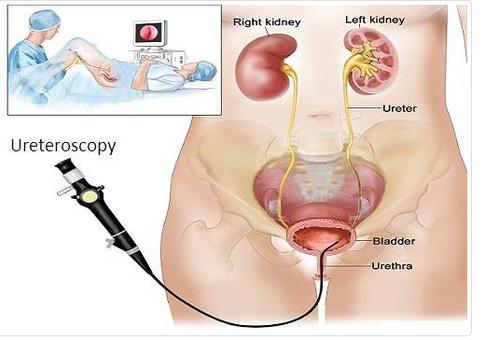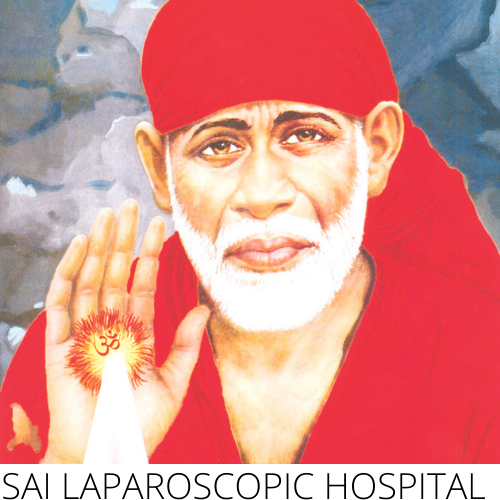Ureteric Stones
What is a ureter stone?
Kidney stones are clusters of crystals that typically form in the kidneys. But these masses can develop and move anywhere along your urinary tract, which includes the ureters, urethra, and bladder.
A ureter stone is a kidney stone inside one of the ureters, which are the tubes that connect the kidneys to the bladder.
The stone will have formed in the kidney and passed into the ureter with the urine from one of the kidneys.
Sometimes, these stones are very small. When that’s the case, the stones may pass through your ureter and into your bladder, and eventually pass out of your body when you urinate.
Sometimes, however, a stone can be too large to pass and can get lodged in the ureter. It may block the flow of urine and can be extremely painful.

What are the symptoms?
The most common symptom of a kidney or ureter stone is pain.
You might feel pain in your lower abdomen or your flank, which is the area of your back just under your ribs. The pain can be mild and dull, or it can be excruciating. The pain may also come and go and radiate to other areas.
Other possible symptoms include:
- pain or a burning sensation when you pee
- blood in your urine
- frequent urge to urinate
- nausea and vomiting
- fever
If you experience any of these symptoms, call your healthcare provider.
Ureter stones are made up of crystals in your urine that clump together. They usually form in the kidneys before passing into the ureter.
Not all ureter stones are made up of the same crystals. These stones can form from different types of crystals such as:
- Calcium. Stones made up of calcium oxalate crystal are the most common. Being dehytrated and eating a diet that includes a lot of high-oxalate foods may increase your risk of developing stones.
- Uric acid. This type of stone develops whenurine is too acidic. It’s more common in men and in people who have gout.
- Struvite. These types of stones are often associated with chronic kidney infections and are found mostly in women who have frequent urinary tract infections (UTIs).
- Cystine. The least common type of stone, cystine stones occur in people who have the genetic disorder csytinuria. They are caused when cystine, a type of amino acid, leaks into urine from the kidneys.
Certain factors can raise your risk of devloping stones. This includes:
- Family history. If one of your parents or a sibling has had kidney or ureter stones, you may be more likely to develop them, too.
- Dehydration. If you don’t drink enough water, you tend to produce a smaller amount of very concentrated urine. You need to produce a larger amount of urine so salts will stay dissolved, rather than hardening into crystals.
- Diet. Eating a diet high in sodium (salt), animal protein, and high-oxalate food may raise your risk of developing stones. Foods high in oxalate include spinach, tea, chocolate, and nuts. Consuming too much Vitamin C may also increase your risk.
- Certain medications. A number ofdiffernt kinds of medications, including some decongestants, diuretics, steroids, and anticonvulsants, can increase your chance of developing a stone.
- Certain medical conditions. You may be more likely to develop stones if you have:
- a blockage of the urinary tract
- inflammatory bowel disease
- gout
- hyperathyeriosim
- obesity
- recurrent UTIs
How are they diagnosed?
If you’re having pain in your lower abdomen, or you’ve noticed blood in your urine, your healthcare provider may suggest a diagnostic imaging test to look for stones.
Two of the most common imaging tests for stones include:
- A computed tomography (CT) scan. A CT scan is usually the best option for detecting stones in the urinary tract. It uses rotating X-ray machines to create cross-sectional images of the inside of your abdomen and pelvis.
- An ultrasound. Unlike a CT scan, an ultrasound doesn’t use any radiation. This procedure uses high-frequency sound waves to produce images of the inside of your body.
These tests can help your healthcare provider determine the size and location of your stone. Knowing where the stone is located and how big it is will help them develop the right type of treatment plan.
How are ureter stones treated?
You may experience some pain while they pass, but as long as you don’t have a fever or infection, you might not have to do anything else other than drink high volumes of water to allow the stone to pass.
Small stones tend to pass more easily.
Some stones, especially wider ones, do get stuck in the ureter because it’s the narrowest point in your urinary tract. This can cause severe pain and raise your risk of developing an infection.
If you have a larger or wider stone that’s unlikely to be passed on its own, your healthcare provider will likely want to discuss treatment options with you.
They may recommend one of these procedures to remove a ureter stone that’s too large to pass on its own.
- Ureteral stent placement. A small, soft, plastic tube is passed into the ureter around the stone, allowing urine to bypass the stone. This temporary solution is a surgical procedure that’s performed under anesthesia. It’s low risk but will need to be followed up by a procedure to remove or break up the stone.
- Nephrostomy tube placement. An interventional radiologist can temporarily relieve pain by placing this tube directly into the kidney through the back using only sedation and a combination of ultrasound and X-ray. This is commonly used if a fever or infection occurs with urinary obstruction from a stone.
- Shock wave lithotripsy. This procedure uses focused shock waves to break up the stones into smaller pieces, which can then pass through the rest of your urinary tract and out of your body without any extra help.
- Ureteroscopy. Your urologist will thread a thin tube with a scope into your urethra and up into your ureter. Once your doctor can see the stone, the stone can be removed directly or broken up with a laser into smaller pieces that can pass on their own. This procedure may be preceded by placement of a ureteral stent to allow the ureter to passively dilate over a few weeks before ureteroscopy.
- Percutaneous nephrolithotomy. This procedure is typically used if you have very large or an unusual-shaped stone in the kidney. Your doctor will make a small incision in your back and remove the stone through the incision with a nephroscope. Although it’s a minimally invasive procedure, you’ll need general anesthesia.
- Medical expulsive therapy. This type of therapy involves the use of alpha-blocker drugs to help the stone to pass. . Alpha- blockers help lower blood pressure, which can be effective for clearing smaller stones, but it also carries a risk of negative events.
What can you do to prevent ureter stones?
You can’t change your family history, but there are some steps you can take to reduce your chance of developing stones.
- Drink plenty of fluids. If you tend to develop stones, try to consume about 3 litre of fluid (approximately 100 ounces) every day. This will help boost your urine output, which keeps your urine from getting too concentrated. It’s best to drink water instead of juices or sodas.
- Watch your salt and protein intake. If you tend to eat a lot of animal protein and salt, you may want to cut back. Both animal protein and salt can raise the acid levels in your urine.
- Limit high-oxalate foods. Eating foods that are high in oxalate can lead to urinary tract stones. Try to limit these foods in your diet.
- Balance your calcium intake. You don’t want to consume too much calcium, but you don’t want to reduce your calcium intake too much because you’ll put your bones at risk. Plus, foods that are high in calcium can balance out high levels of oxalate in other foods.
- Review your current medications. Talk to your healthcare provider about any medications you’re taking. This includes supplements like vitamin C that have been shown to increase the risk of stones.
BETTER HEALTH CARE IS OUR MISSION
24/7 SERVICE. SAME DAY APPOINTMENTS ARE AVAILABLE.
9437306780/9861065328
health@sailaphospital.com
V4/3, Civil Township,Rourkela-04 769004
